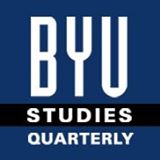BYU Studies

Keywords
Mormon studies, Nauvoo, Council of Fifty
Abstract
Students of early Mormon history have long known about the once-secretive Council of Fifty in Nauvoo and learned much about it.1 However, the records of the council were never available for research until now. The closest I came to the records of the Council of Fifty before the First Presidency made them available for the Joseph Smith Papers was in about 1977. Elder Joseph Anderson of the Seventy, then serving as executive director of the Historical Department, had served for decades as secretary to the First Presidency. When premeeting conversation around a conference table one day turned to the Council of Fifty, Elder Anderson asked what it was. That historians knew much about a council he knew nothing of surprised him and elicited his reminiscence about President Heber J. Grant introducing him to the contents of the First Presidency’s file room when he first began working for the President in 1922. After President Grant pointed out the location of various records he would be using or caring for, he pointed to a box labeled “Council of Fifty” and announced, “You won’t be needing those.” Elder Anderson noted that he had passed by the box many times over the years but never knew what was in it. Now we know—and the publication of the Nauvoo minutes stored in that box as part of the Joseph Smith Papers makes the records accessible for all. In September 2016, the Church Historian’s Press will release The Joseph Smith Papers, Administrative Records: Council of Fifty, Minutes, March 1844–January 1846.2 An excerpt of that volume, “Afternoon Meeting of the Council of Fifty, April 11, 1844,” follows this article.
Recommended Citation
Esplin, Ronald K.
(2016)
"Understanding the Council of Fifty and Its Minutes,"
BYU Studies: Vol. 55:
Iss.
3, Article 3.
Available at:
https://scholarsarchive.byu.edu/byusq/vol55/iss3/3
